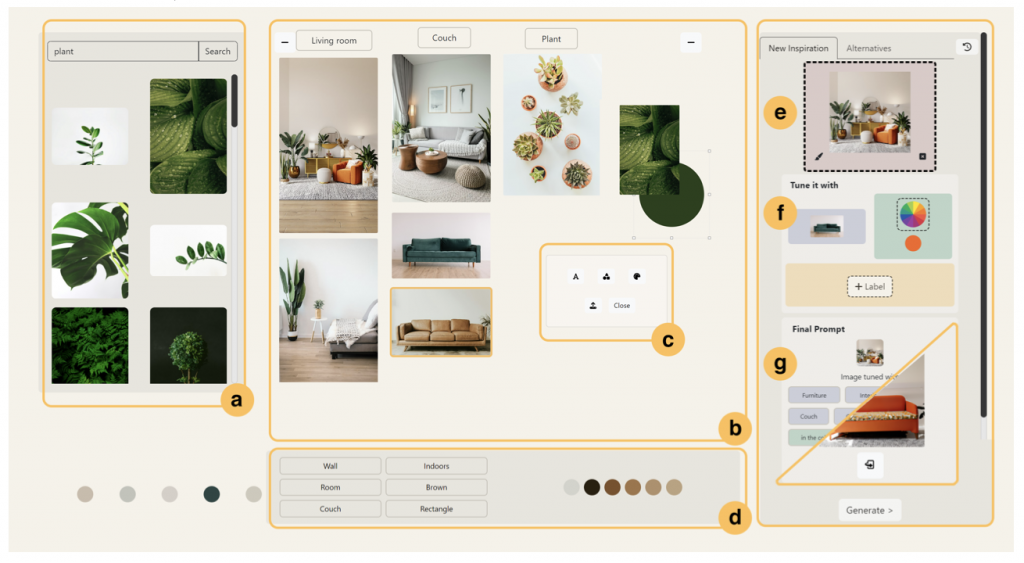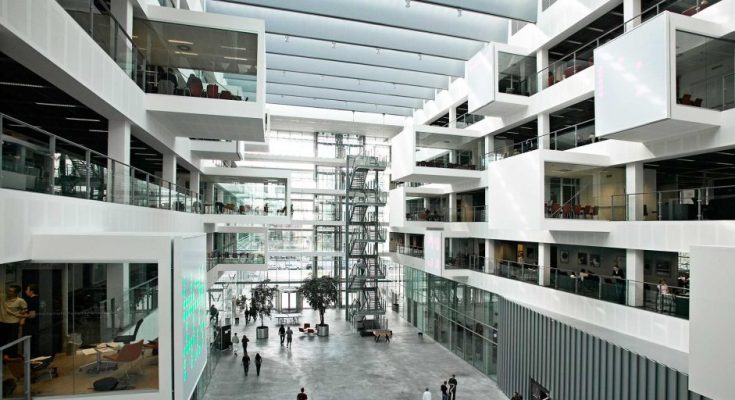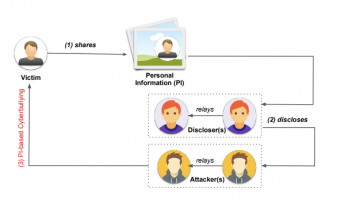While it can be a pleasure to present one’s work to the broader research community, undoubtedly, attending these conferences in person can be supremely beneficial for researchers of any level. DIS 2024 was no exception, and in contrast to the hustle and bustle of larger conferences like CHI, it is a far more concentrated melting pot of ideas – all of which are highly stimulating for those of us flirting with the boundaries of research in creative ways.
Among the myriad of presentations, six papers particularly resonated with me, each offering unique insights and methodologies shaping the future of design:
Children’s Perceptions of Social Robots

One of the most captivating was “It’s kind of weird talking to a sphere: Exploring Children’s Hopes and Fears on Social Robot Morphology Using Speculative Research Methods.” This study delved into how the shape of social robots influences children’s emotions and expectations. It was fascinating to learn that the morphology of a robot significantly impacts how children perceive and interact with it. For instance, they felt more trust in human-like robots, but these also elicited fears of malfunction. In contrast, animal-like robots seem friendly but less capable.
Using speculative research methods like design fiction allowed children to express their hopes and fears creatively. This approach provided rich, imaginative insights into how children envision their interactions with robots in different contexts, from physical activities to cognitive tasks. The study underscores the importance of considering both the physical design of robots and the context of their use to address children’s emotional and practical needs better. While a person might wonder why it would be essential to think about children’s perspectives, these findings can reveal truths about how our perceptions develop into adulthood. And let us not forget, these children will grow up in a world where these developments in AI now will be ‘the norm’. It is essential to fully understand the way younger people begin to form relationships with agencies that are likely to play a more vital role in their lives than was the case for us.
Facilitating AI Project Collaboration
The paper “AINeedsPlanner: A Workbook to Support Effective Collaboration Between AI Experts and Clients” presented a practical tool to improve communication and planning in AI projects. The AINeedsPlanner workbook provides a structured format for detailing project requirements, covering goals, data, budget, and technical needs. This structured approach aims to reduce misunderstandings and ensure efficient project execution.
Based on interviews with AI project teams and experts, the workbook addresses real-world challenges in AI collaborations. It also serves as a discussion roadmap during ongoing projects, helping align client and expert expectations. Real-world case studies demonstrated the workbook’s effectiveness in improving project planning and execution, making it a valuable resource for technical and non-technical stakeholders.
Similar to the first paper, this work addresses a cultural shift already in progress. The speed at which these AI tools are appearing in the workplace warrants research into best practices to catch up. This kind of work is fundamental if these tools are to be embedded effectively and safely.
Enhancing Creativity with AI

“DesignPrompt: Using Multimodal Interaction for Design Exploration with Generative AI” introduced a tool that enhances designers’ creativity by allowing various input forms to create AI prompts. DesignPrompt supports multimodal input, enabling designers to use images, colours, and text to generate more expressive AI outputs. This method encourages greater creative exploration compared to traditional text-only prompts.
The tool’s interactive and transparent prompt editor provides real-time feedback, helping designers understand how the AI interprets input. This transparency makes the AI system more predictable and valuable, supporting designers throughout the design process. DesignPrompt is an important experiment in how to offer a flexible and intuitive way for designers to engage with AI systems.
Again, with AI transforming the way we work, this will include our expectations about the interfaces in which we do the work. I was encouraged to see this paper bringing the sophistication and transparency we would expect from expert tools alongside the ‘magic’ of generative AI – that is often encased in a black box. Although tools like ChatGPT are popular, it is clear that there may be more ways to make large and generative models accessible to a broader audience without sacrificing the functionalities or nuance professionals will often take advantage of.
Integrating AI with Physical Artifacts

The paper “GenFrame – Embedding Generative AI Into Interactive Artifacts” explored how we can integrate generative AI into physical interactive objects to create new art experiences—the GenFrame project embedded AI models into a tangible picture frame, blending digital and physical interactions. Users could manipulate AI-generated content using physical controls, creating a dynamic experience that bridges traditional art and modern AI.
The study highlighted several design considerations, including ensuring user control and balancing the AI’s capabilities and specific design intents. The researchers used techniques like ControlNet to guide the AI in generating consistent images, providing a cohesive user experience. GenFrame demonstrates the potential of integrating AI into interactive artefacts, offering new opportunities for creative expression and user engagement.
What was especially fun about this paper was its appearance in the demo area of the conference. While I can’t imagine this kind of technology will make its way into the home in the immediate future, I can imagine similar features as updates to existing Smart TVs or home entertainment centres. What might be more engaging or exciting though, is interactive displays for museums and galleries; it was fascinating to see how participants experimented with dials to generate imagery at odds with the ‘norms’. Indeed, this piece was an exciting way for people to explore artistic tropes tangibly.
Tarot as a Design Tool

In “Worlding with Tarot,” researchers explored how we can use Tarot cards for reflection, care, and speculative future-building in design. Tarot cards serve as personal introspection and collective development tools, facilitating individual and collective growth modes. The study highlighted how Tarot decks can incorporate diverse representations and address social justice issues, challenging traditional narratives.
The study also shows that tarot cards are a way to expand traditional design methods by integrating care and spiritual connection. This approach enables designers to explore ethical and political futures, fostering a more inclusive and empathetic design practice. The study suggests that Tarot can bridge past, present, and future, creating narratives that honour historical contexts while imagining new possibilities.
Tarot is a well-established reflection tool, even if it can be controversial for some. This study made me think about my work and how it can be possible for individuals to thread narratives between seemingly unrelated imagery – this can be a handy and external tool for understanding one’s own life or how to go about it. It is always interesting to see modern research employing a traditional or existing modality in new or exciting ways.
Felt Sense in Design
The paper “Articulating Felt Senses for More-Than-Human Design – A Viewpoint for Noticing” introduced the concept of the felt sense, an internal, bodily sense of knowing, as a valuable tool for design researchers. Focusing on the felt sense allows designers to access subtle dimensions of interactions with more-than-human entities, such as telepresence robots and natural elements.
The study utilised micro-phenomenological interviews to capture these nuanced experiences, revealing the vividness of interactions often overlooked in traditional methods. The findings highlight the importance of designing for ethical and sensory-rich interactions, advocating a shift from abstract design processes to those grounded in embodied experiences. This approach promotes a more holistic and moral perspective in human-computer interaction.
This paper was among the conference’s most abstract, and I thoroughly enjoyed its perspectives. It can be easy for researchers to see interaction in rigid or well-rehearsed ways. Human experience (and users) are very complicated. Designers and researchers must leave space for designs to take on unexpected uses. These breathing spaces are essential for people to make technologies their own. Still, they also allow for more use cases and advantages than we can ever plan for. This paper addresses, on some level, the strange enterprise of technology today, where there is far more than just a ‘box’ and a human. Many technologies today are playing with our perceptions; increasingly, our interfaces are uncoupling the norms or standards of using a computer – or indeed, what one is.
Putting it All Together
Taking a step back, what is clear from DIS this year is that we are treading more profoundly into strange times. It is evident from the broad presence of generative AI and large language models in these works that something of a revolution is occurring. In many cases, these tools have been transformative in the research process. Several researchers commented on how specific tools have accelerated their efforts profoundly, making things that might have taken many months of training or work, now possible for them. In many cases, as a researcher, you must judge whether to develop or try something because it will cost time and resources to learn the basics. In some situations, AI like ChatGPT can facilitate exploration and add flare or character to research that would have previously been an unjustifiable expense.
That is not to say that this revolution is all good or near its peak. Much of this research is highly speculative and cautious. Researchers are still in a phase of deconstructing the possibilities – while the improvements keep coming. However, some of the most exciting work fell outside intuitive use cases for these developments. These are the threads that I will be following closely. In the case of LLMs, many issues still need to be addressed – like biases or hallucinations. It is these quirks, however, that some researchers are realising may be advantageous ways to unlock creativity in union with human users. While it is always fun to speculate about futures where AIs and robots do all the hard work, DIS makes it quite clear there is a significant interim where AI and humans will be most productive as a pairing. Equally, however, it makes evident that profound conversations are developing about the legitimacy or extent we can expect for this partnership. If the last few years have been anything to go by, I expect DIS 2025 will include talking points that are just as groundbreaking for our future work (and life) with these new agencies amongst us.




